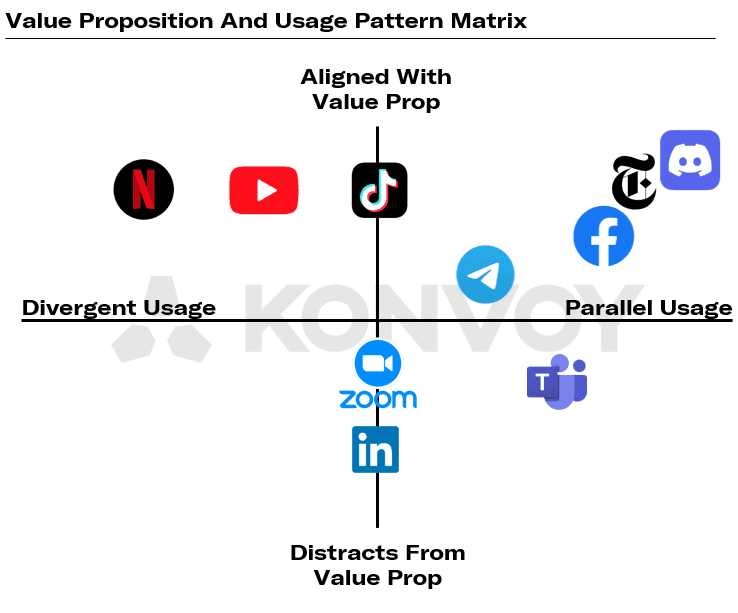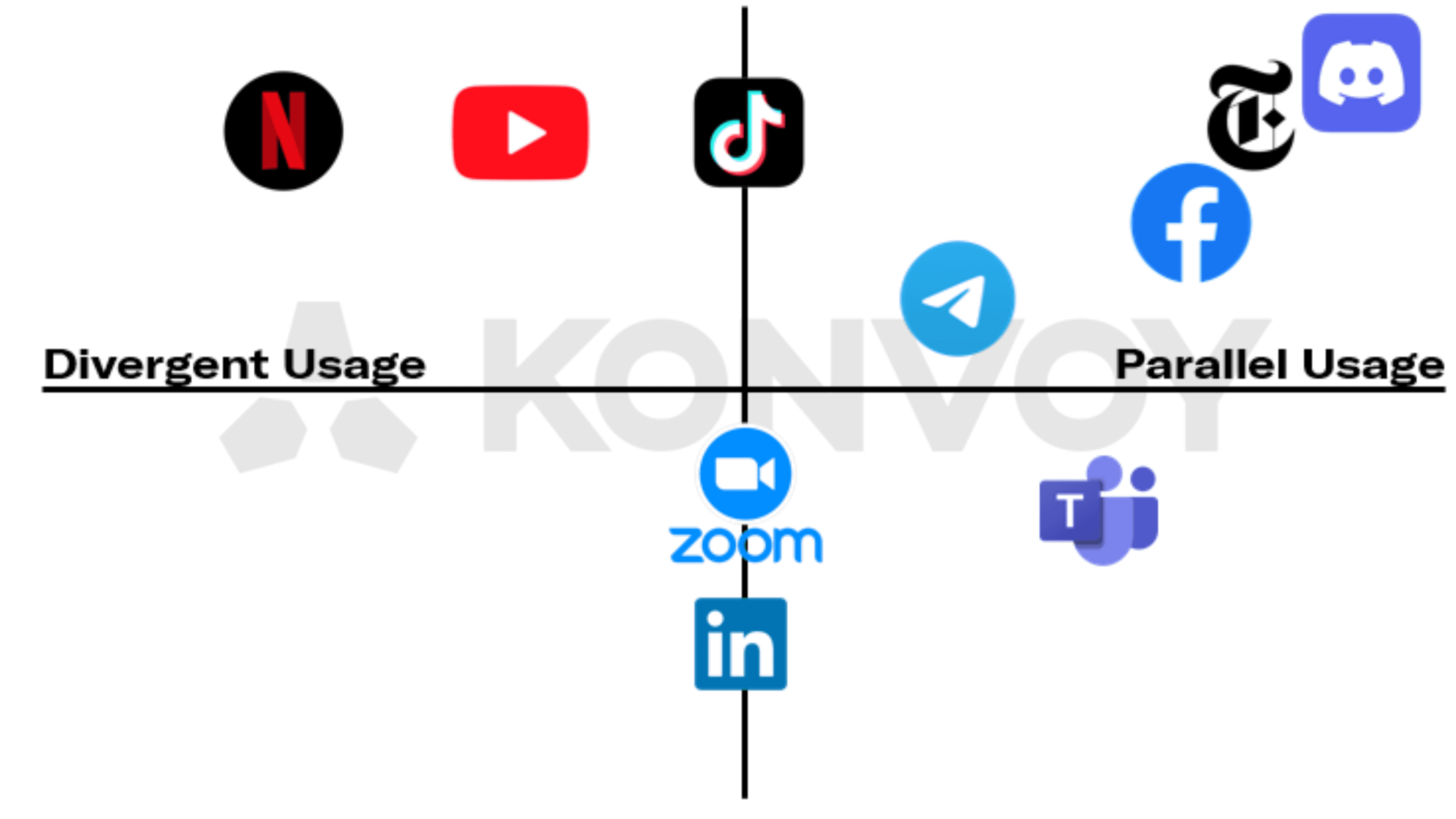The integration of video games into various digital platforms has become an increasingly popular strategy among major tech companies like Apple, Amazon, and Netflix. As these companies seek to enhance user engagement and retention, the appeal of gaming as a tool for capturing attention is undeniable. However, not all platforms benefit equally from incorporating games.
Recent insights from Konvoy Ventures reveal that the success of such initiatives hinges on how well games align with a platform’s core value proposition and existing usage patterns. This analysis highlights the importance of a strategic approach, demonstrating that while games can offer significant benefits, they are not a one-size-fits-all solution.

Konvoy Ventures Cover Banner on X
The Importance of Alignment
When considering the introduction of games, two critical factors need to be evaluated: the platform's core value proposition and the existing usage patterns of its users.
- Core Value Proposition: This refers to the fundamental benefit that the platform provides to its users, such as entertainment, communication, or professional networking. Games should align with this core value to complement rather than detract from the platform's purpose.
- Usage Patterns: These are the typical ways in which users engage with the platform, including how often they log in, the duration of their sessions, and the context in which they use the platform. Games that align with these patterns can enhance user engagement, while those that diverge might disrupt the user experience.

Value Proposition and Usage Patter Matrix
Categorizing Platform-Gaming Relationships
Platforms can be classified into four categories based on their relationship with games:
- Parallel & Aligned: Platforms where existing usage patterns are similar to gaming patterns, and games enhance the core value proposition.
- Parallel & Distracting: Platforms where usage patterns are similar, but games detract from the core value proposition.
- Divergent & Aligned: Platforms where games differ from usage patterns but align with the core value proposition.
- Divergent & Distracting: Platforms where games neither align with usage patterns nor enhance the core value proposition.
Examples of Gaming Integration in Major Platforms
The New York Times (Parallel & Aligned)
The New York Times (NYT) is a prime example of successful gaming integration. With its acquisition of Wordle in 2022 and a history of 80+ offering crossword puzzles, NYT has seamlessly integrated casual games into its platform. The NYT's games page features 10 different games, some of which are free while others require a subscription, though most can only be played once per day.
This strategic expansion into digital games has proven successful, with over 1 million NYT Games subscribers and 10 million daily players. The daily nature of games like Wordle aligns perfectly with NYT’s usage patterns, where users log in daily to consume news. Games enhance the value proposition by providing additional engagement through mental stimulation, making them a natural fit for the platform.

New York Times Game Wordle
Microsoft Teams (Parallel & Distracting)
Microsoft Teams introduced games in 2022 as a part of its communication and collaboration suite. While the platform’s usage patterns—frequent and long-term engagement—could support gaming, the core value proposition of facilitating professional communication is not well-served by games. Microsoft’s argument that games enhance collaboration is not fully convincing, as games are more commonly associated with entertainment than with workplace productivity. This mismatch suggests that gaming on Teams may distract from its primary purpose.

Microsoft Teams Games
Netflix (Divergent & Aligned)
Netflix’s foray into gaming began in 2021, aiming to diversify its entertainment offerings. However, the passive nature of video streaming contrasts with the active engagement required for gaming. This divergence in usage patterns presents a challenge. Yet, games align with Netflix’s core value of providing entertainment and competing for user attention. To succeed, Netflix might need to focus on games that mimic passive consumption, such as interactive stories, which align more closely with current user habits. You can read more about Netflix gaming here.

Netflix Games
Zoom & LinkedIn (Divergent & Distracting)
Zoom and LinkedIn represent platforms where gaming strategies may be both divergent and distracting. Zoom’s introduction of games in 2021 contrasts with its primary use as a tool for professional communication, particularly in enterprise contexts. Similarly, LinkedIn’s professional focus makes the inclusion of games potentially distracting and misaligned with users’ work-related goals. For both platforms, gaming could dilute their brand and conflict with their core value propositions.

LinkedIn Games
Final Thoughts
In conclusion, the integration of video games into digital platforms requires a nuanced understanding of how games fit within a platform's core value proposition and user behavior patterns. As highlighted by Konvoy Ventures, while games offer substantial potential for enhancing engagement and creating new revenue streams, their success largely depends on their alignment with a platform's existing functions and user expectations.
Platforms that effectively integrate games will find that they complement rather than disrupt their core offerings, fostering increased user interaction and satisfaction. Conversely, platforms that misalign their gaming strategies may encounter challenges, including user distraction and brand dilution. Therefore, a carefully considered approach is essential for leveraging the benefits of gaming without compromising the platform's primary objectives and user experience. You can read the full write-up by Konvoy here.




